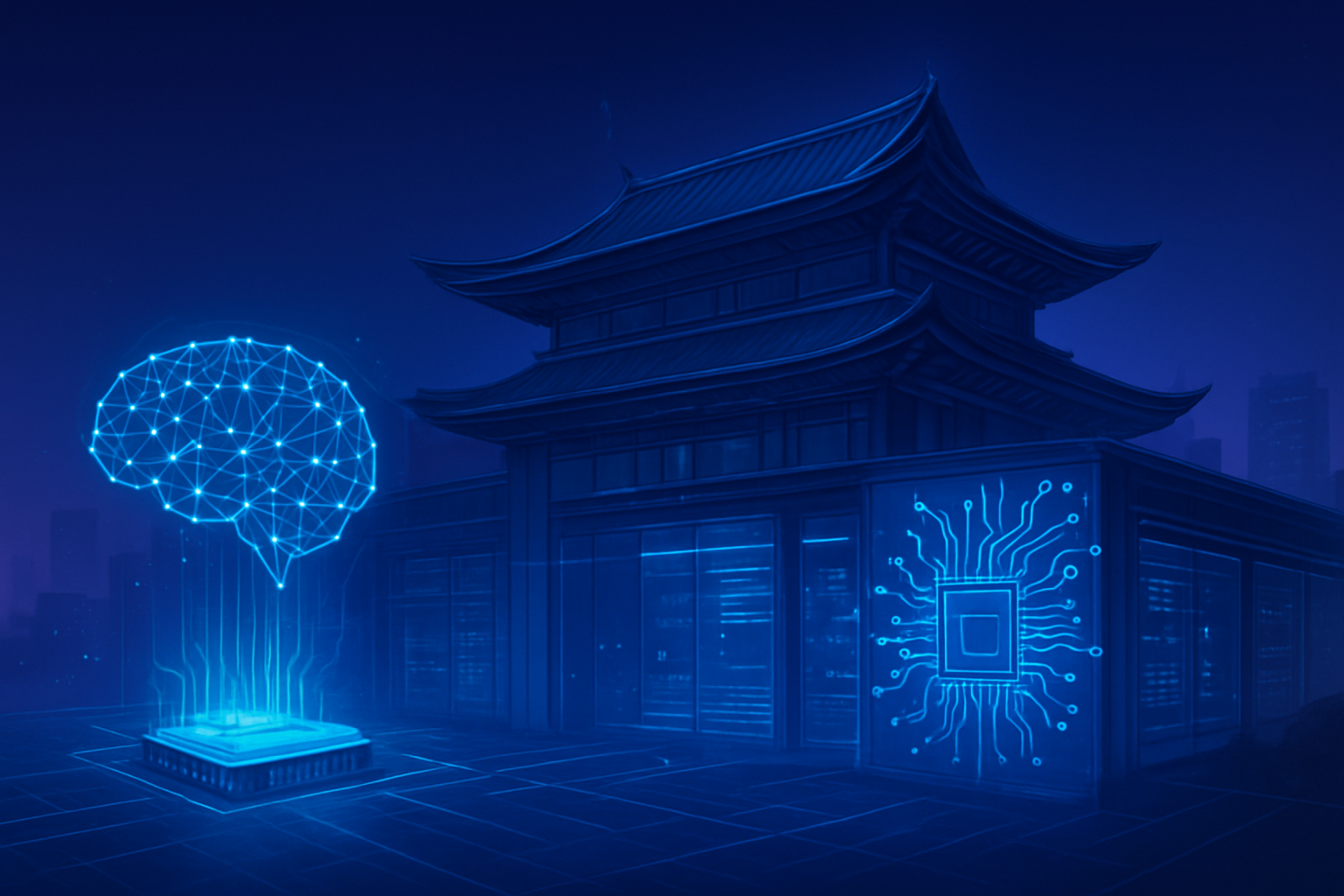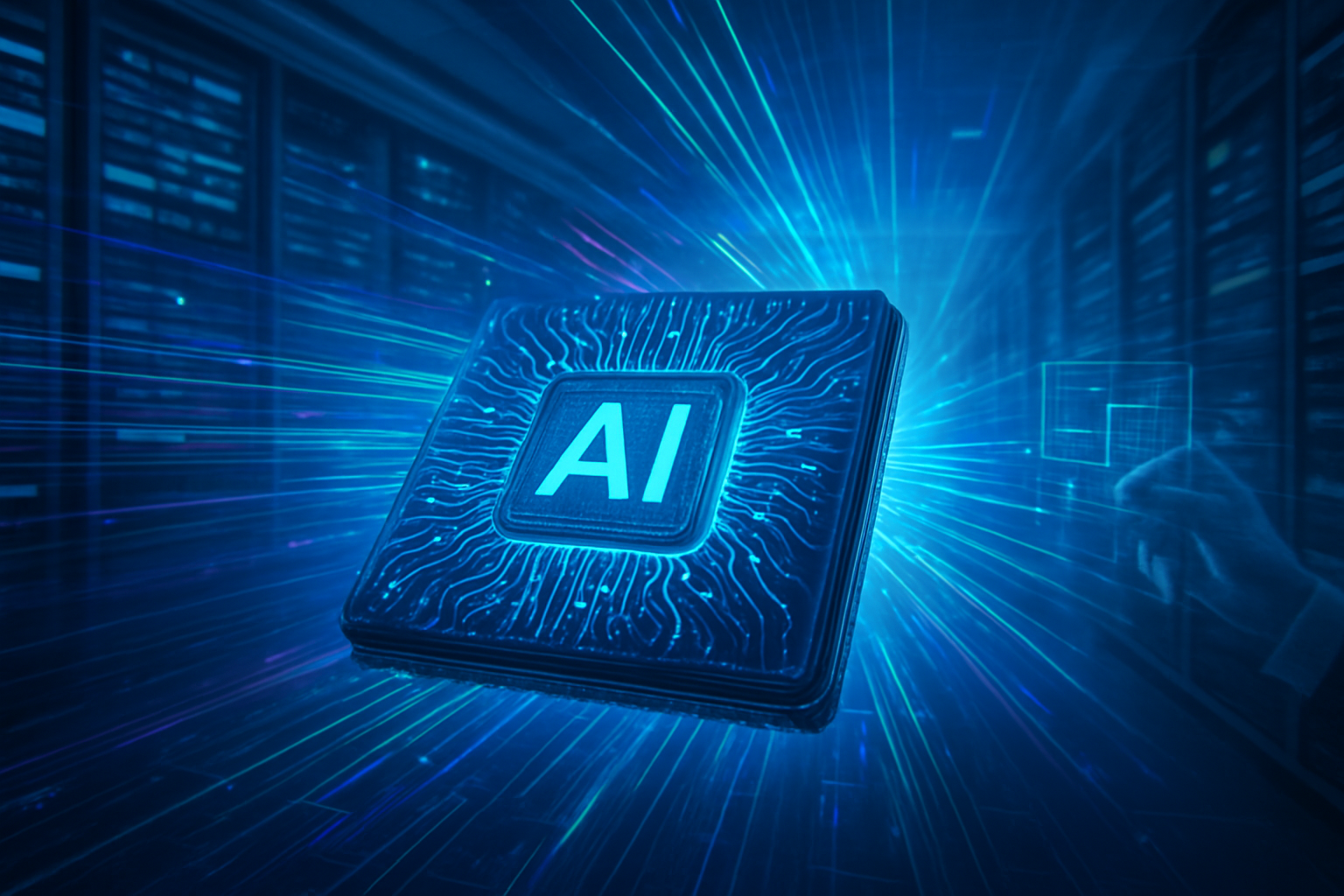Google (NASDAQ: GOOGL) has officially unveiled its largest Artificial Intelligence (AI) infrastructure hardware engineering center outside of the United States, strategically located in Taipei, Taiwan. This multidisciplinary hub, inaugurated on November 20, 2025, is poised to become a critical nexus for the engineering, development, and testing of advanced AI hardware systems. Housing hundreds of engineers specializing in hardware, software, testing, and lab operations, the center signifies a profound commitment by Google to accelerate AI innovation and solidify its global AI infrastructure.
The immediate significance of this investment cannot be overstated. The Taipei center will focus on the intricate process of integrating AI processors, such as Google's own Tensor Processing Units (TPU), onto motherboards and subsequently attaching them to servers. This cutting-edge technology developed and rigorously tested within this Taiwanese facility will be deployed across Google's vast network of global data centers, forming the computational backbone for services like Google Search, YouTube, and the rapidly evolving capabilities powered by Gemini. This strategic move leverages Taiwan's unparalleled position as a global leader in semiconductor manufacturing and its robust technology ecosystem, promising to significantly shorten development cycles and enhance the efficiency of AI hardware deployment.
Engineering the Future: Google's Advanced AI Hardware Development in Taiwan
At the heart of Google's new Taipei engineering center lies a profound focus on advancing the company's proprietary AI chips, primarily its Tensor Processing Units (TPUs). Engineers at this state-of-the-art facility will engage in the intricate process of integrating these powerful AI processors onto motherboards, subsequently assembling them into high-performance servers. Beyond chip integration, the center's mandate extends to comprehensive AI server design, encompassing critical elements such as robust power systems, efficient cooling technologies, and cutting-edge optical interconnects. This holistic approach ensures that the hardware developed here is optimized for the demanding computational requirements of modern AI workloads, forming the backbone for Google's global AI services.
This strategic establishment in Taiwan represents a significant evolution in Google's approach to AI hardware development. Unlike previous, more geographically dispersed efforts, the Taipei center consolidates multidisciplinary teams – spanning hardware, software, testing, and lab work – under one roof. This integrated environment, coupled with Taiwan's unique position at the nexus of global semiconductor design, engineering, manufacturing, and deployment, is expected to dramatically accelerate innovation. Industry experts predict that this proximity to key supply chain partners, notably Taiwan Semiconductor Manufacturing Company (TSMC) (TPE: 2330), could reduce deployment cycle times for some projects by as much as 45%, a crucial advantage in the fast-paced AI landscape. Furthermore, the facility emphasizes sustainability, incorporating features like solar installations, low-emission refrigerants, and water-saving systems, setting a new benchmark for environmentally conscious AI data centers.
Initial reactions from the AI research community and industry experts have been overwhelmingly positive. Taiwan's President Lai Ching-te lauded Google's investment, emphasizing its role in solidifying Taiwan's position as a trustworthy technology partner and a key hub for secure and reliable AI development. Raymond Greene, the de facto U.S. ambassador in Taipei, echoed these sentiments, highlighting the center as a testament to the deepening economic and technological partnership between the United States and Taiwan. Industry analysts anticipate a substantial boost to Taiwan's AI hardware ecosystem, predicting a surge in demand for locally produced AI server components, including advanced liquid cooling systems, power delivery modules, PCBs, and high-speed optical networking solutions, further cementing Taiwan's critical role in the global AI supply chain.
Reshaping the AI Landscape: Competitive Dynamics and Market Shifts
Google's (NASDAQ: GOOGL) strategic investment in its Taiwan AI hardware engineering center is poised to send ripple effects across the entire technology industry, creating both immense opportunities and intensified competition. Taiwanese semiconductor giants, most notably Taiwan Semiconductor Manufacturing Company (TSMC) (TPE: 2330), stand as primary beneficiaries, further integrating into Google's robust AI supply chain. The center's focus on integrating Google's Tensor Processing Units (TPUs) and other AI processors onto motherboards and servers will drive increased demand for local component suppliers and foster an "ecosystem" approach, with Google actively collaborating with manufacturers for next-generation semiconductors, image sensors, and displays. Reports also indicate a significant partnership with Taiwan's MediaTek (TPE: 2454) for future TPU development, leveraging MediaTek's strong relationship with TSMC and potential cost efficiencies, thereby elevating the role of Taiwanese design firms in cutting-edge AI silicon.
For major AI labs and tech companies globally, Google's move intensifies the ongoing arms race in AI hardware. The Taipei center, as Google's largest AI hardware engineering hub outside the US, will significantly accelerate Google's AI capabilities and strengthen its worldwide data center ecosystem. A key strategic advantage for Google is its reduced reliance on NVIDIA's (NASDAQ: NVDA) dominant AI accelerators through the development of its custom TPUs and partnerships with companies like MediaTek. This vertical integration strategy provides Google with greater control over its AI infrastructure costs, innovation cycles, and ultimately, a distinct competitive edge. The expansion will also undoubtedly escalate the talent war for AI engineers and researchers in Taiwan, a trend already observed with other tech giants like Microsoft (NASDAQ: MSFT) actively recruiting in the region.
The innovations stemming from Google's Taiwan center are expected to drive several market disruptions. The accelerated development and deployment of advanced AI hardware across Google's global data centers will lead to more sophisticated AI products and services across all sectors. Google's commitment to its in-house TPUs and strategic partnerships could shift market share dynamics in the specialized AI accelerator market, offering viable alternatives to existing solutions. Furthermore, the immense computing power unlocked by these advanced AI chips will put increasing pressure on existing software and hardware not optimized for AI to adapt or risk obsolescence. Google Cloud's "all-in" strategy on its AI agent platform, significantly bolstered by this hardware center, signals a future where AI services are more deeply integrated and autonomously capable, potentially disrupting current AI consumption models. This move solidifies Google's market positioning by leveraging Taiwan's world-class semiconductor industry, advanced R&D talent, and mature supply chain for integrated AI software and hardware development.
A New Era of AI: Broader Implications and Geopolitical Undercurrents
Google's (NASDAQ: GOOGL) establishment of its AI hardware engineering center in Taiwan transcends a mere expansion; it represents a profound alignment with several critical trends shaping the broader AI landscape in 2025. The center's dedication to developing and testing specialized AI chips, such as Google's Tensor Processing Units (TPUs), and their integration into sophisticated server architectures, underscores the industry's shift towards custom silicon as a strategic differentiator. These specialized processors offer superior performance, lower latency, and enhanced energy efficiency for complex AI workloads, exemplified by Google's recent unveiling of its seventh-generation TPU, "Ironwood." This move highlights that cutting-edge AI software is increasingly reliant on deeply optimized underlying hardware, making hardware a crucial competitive battleground. Furthermore, the work on power systems and cooling technologies at the Taiwan center directly addresses the imperative for energy-efficient AI deployments as global AI infrastructure scales.
The impacts of this development are far-reaching. For Google, it significantly enhances its ability to innovate and deploy AI globally, strengthening its competitive edge against other cloud providers and AI leaders through optimized proprietary hardware. For Taiwan, the center cements its position as a critical player in the global AI supply chain and a hub for secure and trustworthy AI innovation. Taiwan's President Lai Ching-te hailed the investment as a testament to Google's confidence in the island as a reliable technology partner, further strengthening ties with US tech interests amidst rising geopolitical tensions. Economically, the center is expected to boost demand for Taiwan's AI hardware ecosystem and local component production, with AI development projected to contribute an estimated US$103 billion to Taiwan's economy by 2030. Globally, this move is part of a broader trend by US tech giants to diversify and de-risk supply chains, contributing to the development of secure AI technologies outside China's influence.
Despite the numerous positive implications, potential concerns persist. Taiwan's highly strategic location, in the midst of escalating tensions with China, introduces geopolitical vulnerability; any disruption could severely impact the global AI ecosystem given Taiwan's near-monopoly on advanced chip manufacturing. Furthermore, former Intel (NASDAQ: INTC) CEO Pat Gelsinger highlighted in November 2025 that Taiwan's greatest challenge for sustaining AI development is its energy supply, emphasizing the critical need for a resilient energy chain. While Taiwan excels in hardware, it faces challenges in developing its AI software and application startup ecosystem compared to regions like Silicon Valley, and comprehensive AI-specific legislation is still in development. Compared to previous AI milestones like AlphaGo (2016) which showcased AI's potential, Google's Taiwan center signifies the large-scale industrialization and global deployment of AI capabilities, moving AI from research labs to the core infrastructure powering billions of daily interactions, deeply intertwined with geopolitical strategy and supply chain resilience.
The Road Ahead: AI's Evolving Horizon from Taiwan
In the near term, Google's (NASDAQ: GOOGL) Taiwan AI hardware engineering center is set to accelerate the development and deployment of AI systems for Google's global data centers. The primary focus will remain on the intricate integration of custom Tensor Processing Unit (TPU) AI processors onto motherboards and their assembly into high-performance servers. This multidisciplinary hub, housing hundreds of engineers across hardware, software, testing, and lab functions, is expected to significantly reduce deployment cycle times for some projects by up to 45%. Beyond hardware, Google is investing in talent development through initiatives like the Gemini Academy in Taiwan and empowering the developer community with tools like Google AI Studio, Vertex AI, and Gemma, with thousands of developers expected to participate in Google Cloud training. Infrastructure enhancements, such as the Apricot subsea cable, further bolster the center's connectivity. A reported partnership with MediaTek (TPE: 2454) for next-generation AI chips for various applications also signals an exciting near-term trajectory.
Looking further ahead, Google's investment is poised to solidify Taiwan's standing as a crucial player in the global AI supply chain and a hub for secure and trustworthy AI development. This aligns with Google's broader strategy to strengthen its global AI infrastructure while diversifying operations beyond the United States. Economically, Taiwan is projected to gain significantly, with an estimated US$103 billion in economic benefits from AI development by 2030, nearly half of which is expected in the manufacturing sector. The technologies developed here will underpin a vast array of AI applications globally, including powering Google's core services like Search, YouTube, and Gemini, and accelerating generative AI across diverse sectors such as tourism, manufacturing, retail, healthcare, and entertainment. Specific use cases on the horizon include advanced AI agents for customer service, enhanced in-car experiences, enterprise productivity tools, AI research assistants, business optimization, early breast cancer detection, and robust AI-driven cybersecurity tools.
Despite the optimistic outlook, challenges remain. Geopolitical tensions, particularly with China's claims over Taiwan, introduce a degree of uncertainty, necessitating a strong focus on developing secure and trustworthy AI systems. The highly competitive global AI landscape demands continuous investment in AI infrastructure and talent development to maintain Taiwan's competitive edge. While Google is actively training a significant number of AI professionals, the rapid pace of technological change requires ongoing efforts to cultivate a skilled workforce. Experts and officials largely predict a positive trajectory, viewing the new center as a testament to Taiwan's place as an important center for global AI innovation and a key hub for building secure and trustworthy AI. Raymond Greene, the de facto US ambassador in Taipei, sees this as a reflection of a deep partnership and a "new golden age in US-Taiwan economic relations," with analysts suggesting that Google's investment is part of a broader trend among US tech companies to leverage Taiwan's world-class semiconductor production capabilities and highly skilled engineering talent.
Conclusion: Taiwan at the Forefront of the AI Revolution
Google's (NASDAQ: GOOGL) inauguration of its largest AI hardware engineering center outside the United States in Taipei, Taiwan, marks a pivotal moment in the ongoing artificial intelligence revolution. This strategic investment underscores Google's commitment to advancing its proprietary AI hardware, particularly its Tensor Processing Units (TPUs), and leveraging Taiwan's unparalleled expertise in semiconductor manufacturing and high-tech engineering. The center is not merely an expansion; it's a testament to the increasing importance of integrated hardware and software co-design in achieving next-generation AI capabilities and the critical need for resilient, diversified global supply chains in a geopolitically complex world.
The significance of this development in AI history cannot be overstated. It represents a maturation of AI from theoretical breakthroughs to large-scale industrialization, where the physical infrastructure becomes as crucial as the algorithms themselves. This move solidifies Taiwan's indispensable role as a global AI powerhouse, transforming it from a manufacturing hub into a high-value AI engineering and innovation center. As we look ahead, the coming weeks and months will likely see accelerated progress in Google's AI capabilities, further integration with Taiwan's robust tech ecosystem, and potentially new partnerships that will continue to shape the future of AI. The world will be watching closely as this strategic hub drives innovation that will power the next generation of AI-driven services and applications across the globe.
This content is intended for informational purposes only and represents analysis of current AI developments.
TokenRing AI delivers enterprise-grade solutions for multi-agent AI workflow orchestration, AI-powered development tools, and seamless remote collaboration platforms.
For more information, visit https://www.tokenring.ai/.









